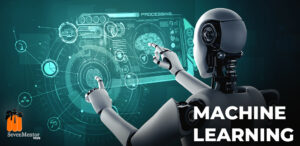Time Series Forecasting with Machine Learning
Time Series Forecasting with Machine Learning is a powerful technique that enables us to analyze historical patterns and make predictions about the future based on sequential data. From weather forecasting to stock market predictions, time series forecasting plays a vital role in various domains. With advancements in machine learning, we now have powerful tools and algorithms that can unravel the hidden patterns within time series data and provide accurate forecasts. In this blog post, we will delve into the world of time series forecasting with machine learning, exploring its techniques, challenges, and real-world applications.
For Free, Demo classes Call: 7507414653
Registration Link: Click Here!
Understanding Time Series Data
Time series data consists of observations recorded at regular intervals over time. It differs from cross-sectional data, where observations are independent of each other. In time series data, the order and temporal dependencies between observations are crucial. Common examples of time series data include stock prices, temperature records, and sales data.
The key characteristics of time series data include trend, seasonality, and noise. Trend refers to the long-term upward or downward movement of the data. Seasonality represents recurring patterns that occur within specific time frames, such as daily, monthly, or yearly cycles. Noise refers to the random fluctuations present in the data.
Note: Enroll in our Machine Learning Classes in Pune today with SevenMentor and start building the skills you need to succeed in this exciting field!

Challenges in Time Series Forecasting
Forecasting accurate future values in time series data poses several challenges. One significant challenge is dealing with the complexity of real-world data, which often contains missing values, outliers, and irregularities. Handling such data requires preprocessing techniques like imputation, outlier detection, and smoothing.
Another challenge is identifying and capturing the underlying patterns in the data. Time series data may exhibit multiple components, including trends, seasonality, and cyclic behavior. Machine learning algorithms must be capable of extracting and modeling these components effectively.
Machine Learning Techniques for Time Series Forecasting: Machine learning offers a range of techniques that can be applied to time series forecasting. Some popular approaches include:
- Autoregressive Integrated Moving Average (ARIMA): ARIMA models capture both autoregressive (AR) and moving average (MA) components to model the data’s past behavior and residuals. They are particularly effective for stationary time series data. ARIMA models use parameters such as order (p, d, q) to represent the autoregressive, differencing, and moving average components, respectively.
- Exponential Smoothing Methods: Exponential smoothing models, such as Simple Exponential Smoothing (SES) and Holt-Winters’ methods, are effective in capturing trends and seasonality. They assign exponentially decreasing weights to older observations, giving more importance to recent data points. SES is suitable for data without trend or seasonality, while Holt-Winters’ methods handle data with trend and seasonality.
- Long Short-Term Memory (LSTM) Networks: LSTM networks, a type of recurrent neural network (RNN), are adept at capturing long-term dependencies in sequential data. They have shown excellent performance in various time series forecasting tasks, especially when there are complex patterns or long-term dependencies present. LSTM networks use memory cells to retain information over a long sequence of observations, making them suitable for capturing temporal patterns.
- Support Vector Regression (SVR): SVR utilizes support vector machines (SVM) to perform regression analysis on time series data. It can handle non-linear relationships and has been successfully applied in various forecasting tasks, such as stock market predictions and energy load forecasting. SVR uses a kernel function to transform the data into a higher-dimensional feature space, where a hyperplane is determined to approximate the underlying pattern.
For Free, Demo classes Call: 7507414653
Registration Link: Click Here!
Real-World Applications
Time series forecasting finds application in numerous domains. Let’s explore a few examples:
- Demand Forecasting: Retailers can predict future demand for products, allowing for optimized inventory management and supply chain operations. By analyzing historical sales data, seasonality, and external factors like promotions or holidays, accurate demand forecasts can be generated. This helps in avoiding stockouts and overstocking, leading to improved customer satisfaction and cost savings.
- Energy Load Forecasting: Electricity companies utilize time series forecasting to predict energy demand accurately, facilitating efficient power generation and distribution. By considering historical consumption patterns, weather conditions, and socioeconomic factors, accurate load forecasts can be generated, ensuring the optimal allocation of resources. This helps in avoiding energy shortages or excess capacity, leading to reduced costs and environmental impact.
- Financial Market Predictions: Investors and traders employ time series forecasting to make informed decisions in the financial markets. By analyzing historical stock prices, trading volumes, and macroeconomic indicators, machine learning models can provide insights into future price movements. This information helps investors in devising trading strategies, portfolio management, and risk mitigation.
- Disease Outbreak Prediction: Time series forecasting plays a crucial role in predicting disease outbreaks, such as influenza or COVID-19. By analyzing historical data on infection rates, population demographics, and environmental factors, machine-learning models can forecast the spread and severity of outbreaks. This information aids healthcare authorities in resource planning, implementing preventive measures, and timely intervention.
For Free, Demo classes Call: 7507414653
Registration Link: Click Here!
Conclusion
Time series forecasting with machine learning opens up a world of possibilities for predicting future patterns and making informed decisions. The combination of advanced algorithms, large datasets, and computational power enables us to uncover valuable insights from time-dependent data. Whether it’s optimizing business operations, mitigating risks, or improving resource allocation, time series forecasting empowers us to navigate the future with confidence. As technology continues to evolve, we can expect further advancements in time series forecasting techniques, leading to even more accurate and reliable predictions. Supercharge your career with Machine Learning training in Pune. Acquire in-demand skills, master algorithms, and unlock the power of data-driven decision-making. Enroll now for a brighter future!
visit our channel to learn more: Click Here
Author:
Call the Trainer and Book your free demo Class For Machine Learning Call now!!!
| SevenMentor Pvt Ltd.
© Copyright 2021 | Sevenmentor Pvt Ltd.

